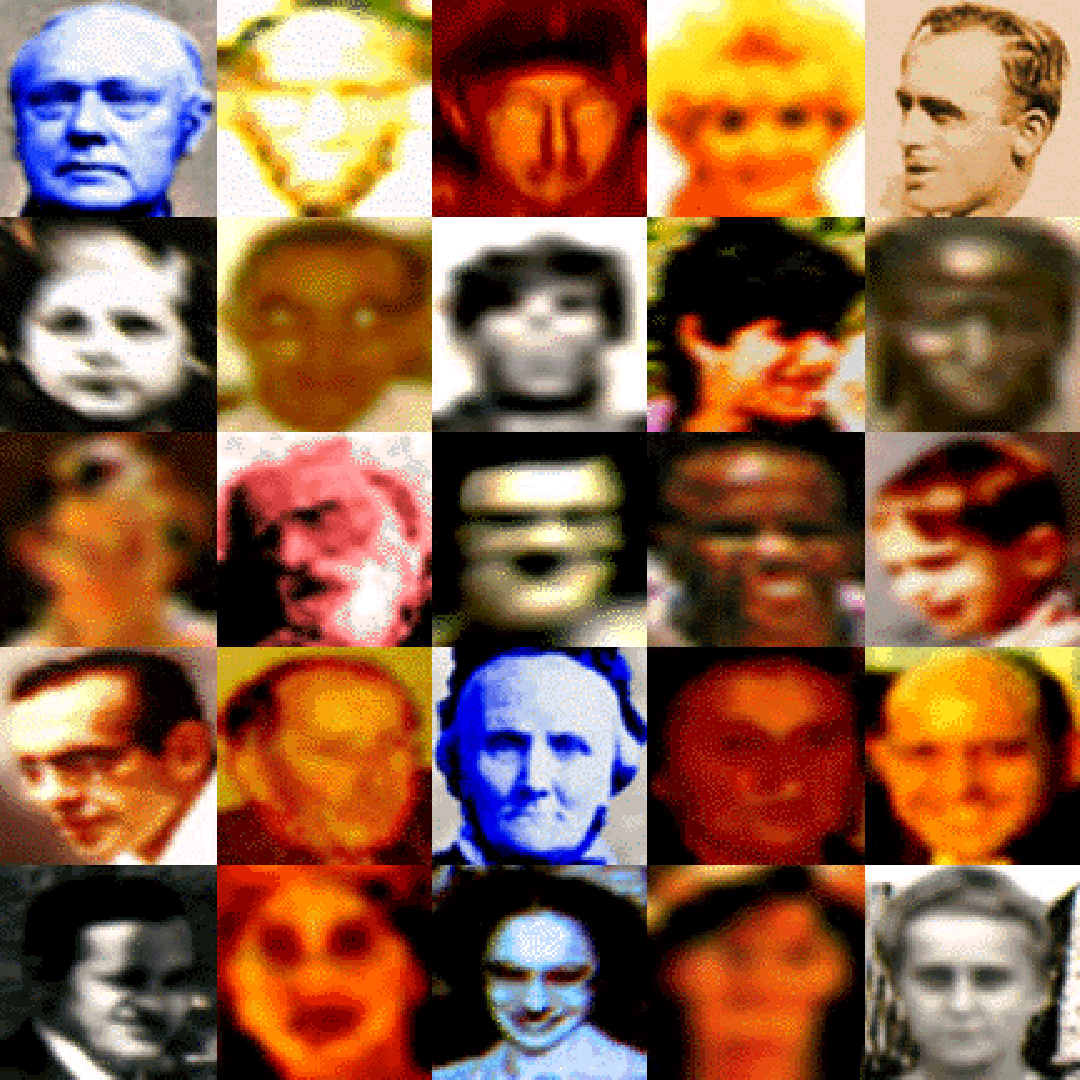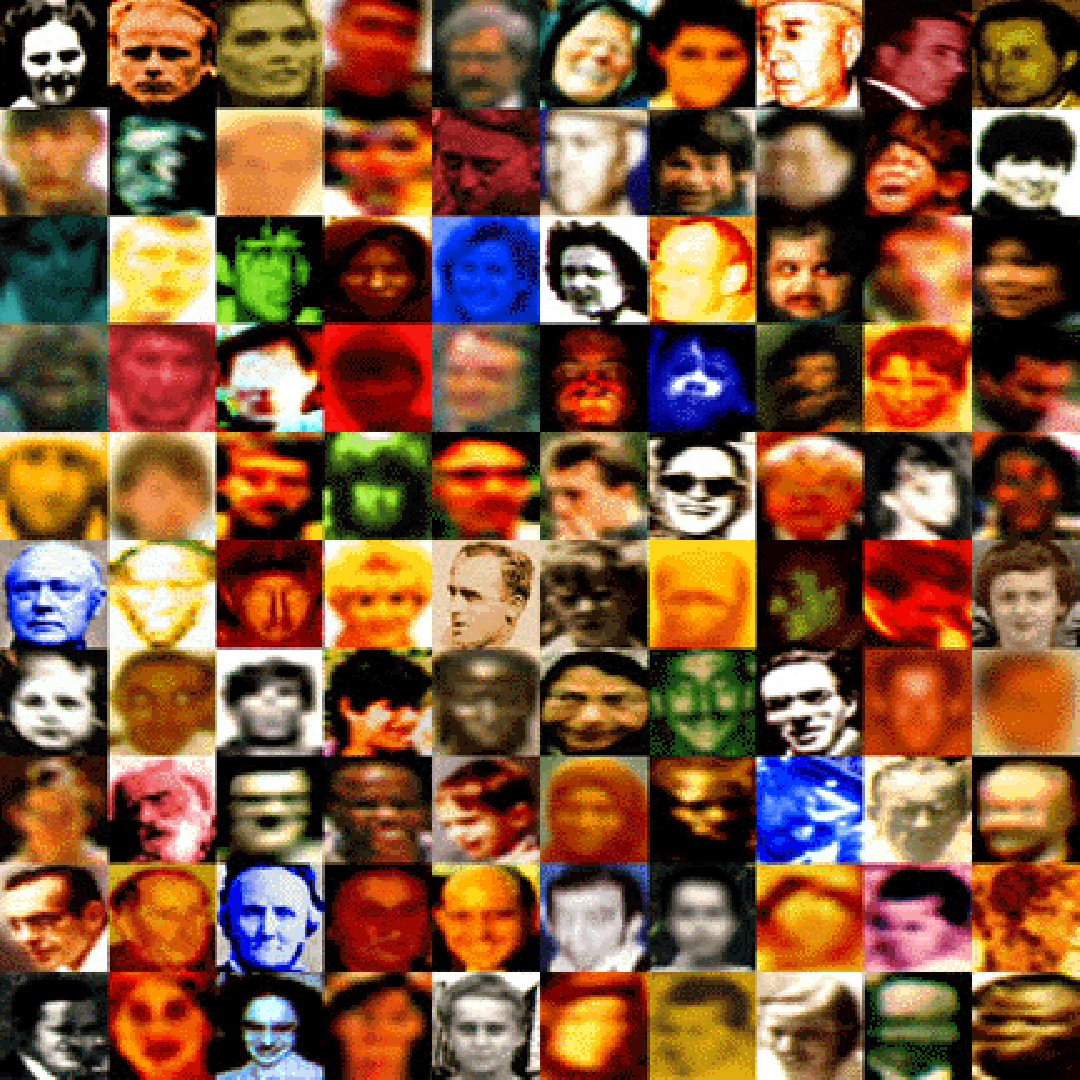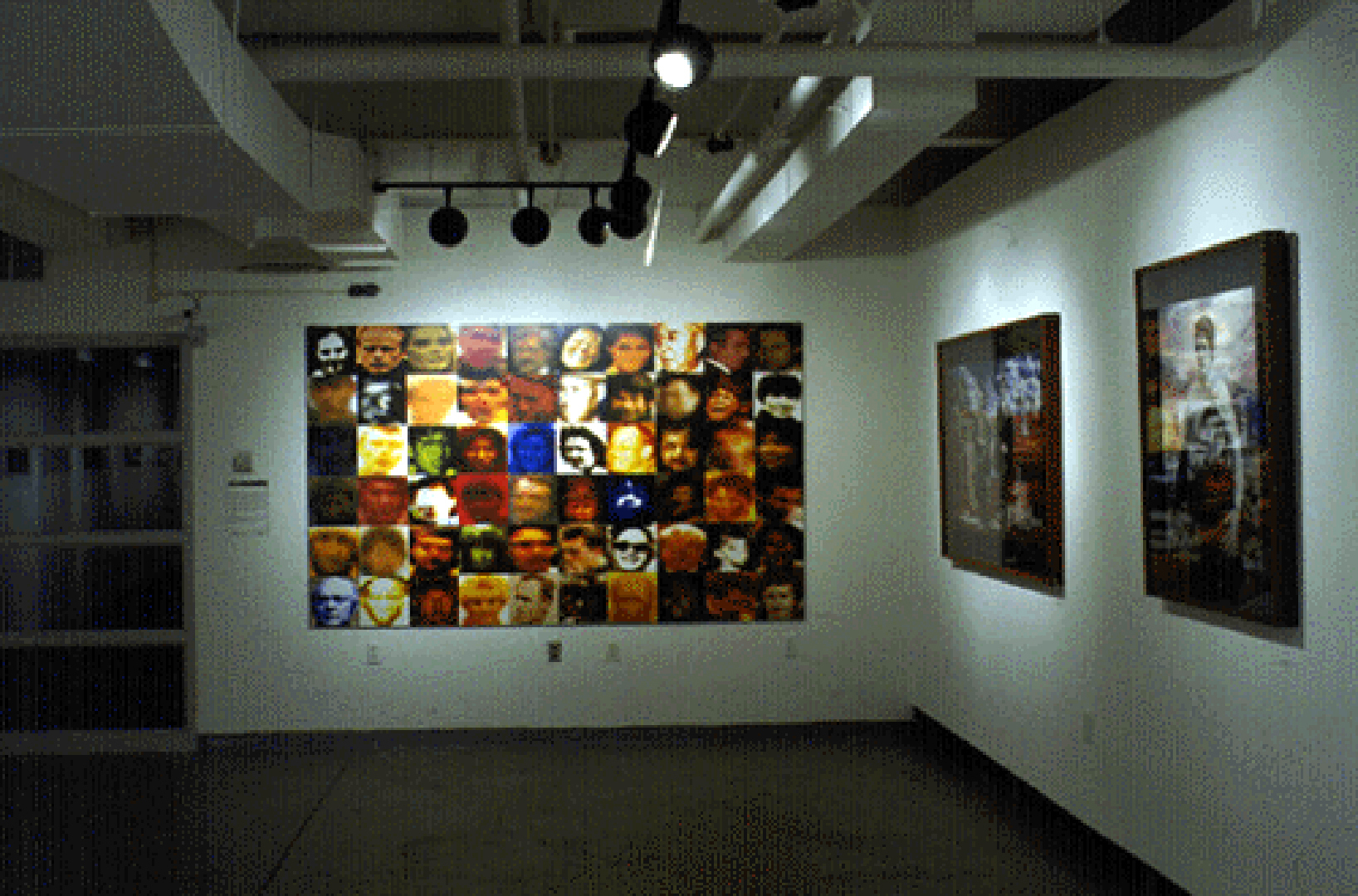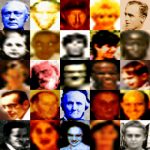Michael Ensdorf: Memory Grid
Title:
Artist(s) and People Involved:
Exhibiting Artist(s):
-
Michael Ensdorf
-
- Roosevelt University
Symposium:
Artist Statement:
The Memory Grid is a collection of mostly anonymous faces recreated using photographic computer imaging tools and techniques. The individual faces are extracted, broken down, and rebuilt from digitized media imagery, advertising pictures, and family snapshots to investigate the nature of photographic, as well as ocular vision. Combining the personal with the political is an attempt to understand and convey the elusive nature of photographic representation. Just what can a photograph tell us about the past and the present? What information is relevant? What part of the photographic process is a construction of the maker, and what part the subject’s? What visual information is required for a viewer to make a positive ID, to trigger a memory, to spark a connection? Memory, identity, and visuality are the driving forces within the Memory Grid project. I look at photographs from the world, my past, pictures derived from a present tense reality, and wonder: Is this from a dream? Do these places and people exist? How can I be sure? I could revisit the places, but the photographs do not reside there; the photographs are “has-beens.” Roland Barthes in Camera Lucida states:
“The name of Photography’s noeme will therefore be: ‘That-has-been,’… what I see has been here, in this place which extends between infinity and the subject (operator or spectator); it has been here, and yet immediately separated; it has been absolutely, refutably present, and yet already deferred”. (pg. 77)
This deferment is of interest to me; this separation from the event and its representation. To an extent, the Memory Grid is an interpretation, an impression of photographic representation as it exists in the world. It is, itself, also a representation from me, my investigation and comment on photography. Our ever-expanding grand image-bank of photographs constantly feeds a kind of collective historical memory. The event, person, and place is “there” for our re-collection of the experience. If we recognize it, we remember it. We use the photograph as a visual aid, a visual cue to something or someone else. The Memory Grid acts against this tendency to place, categorize, and label. The grid attempts to equalize faces and events, to re-categorize, re-label, and ultimately to re-place the original image.
Technical Information:
The Memory Grid is a collection of mostly anonymous faces recreated using photographic computer imaging tools and techniques. The individual faces are extracted, broken down, and rebuilt from digitized media imagery, advertising pictures, and family snapshots to investigate the nature of photographic, as well as ocular vision.









